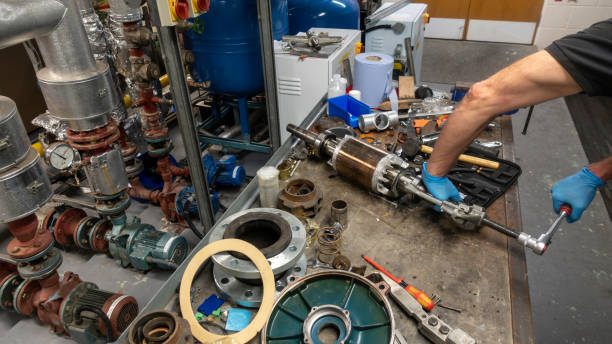EGR (Exhaust Gas Recirculation) is a system found in diesel engines that helps reduce nitrogen oxide (NOx) emissions by recirculating some of the exhaust gases back into the engine’s intake manifold. The EGR system typically consists of an EGR valve, an EGR cooler, and associated piping.
EGR Valve:
The EGR valve is responsible for controlling the amount of exhaust gas that is recirculated back into the engine’s intake manifold. The valve is controlled by the engine’s computer, which regulates the amount of exhaust gas that is recirculated based on various factors such as engine load and temperature. The EGR valve can become clogged with soot or malfunction over time, leading to reduced engine performance and increased emissions.
EGR Cooler:
The EGR cooler is designed to cool the exhaust gases before they are recirculated back into the engine’s intake manifold. The cooler typically consists of a heat exchanger that uses engine coolant to reduce the temperature of the exhaust gases. EGR coolers can become clogged with soot or corroded over time, leading to reduced cooling efficiency and increased risk of engine damage.
EGR Delete Kits:
EGR delete kits are aftermarket products designed to remove the EGR system from a diesel engine. Buy quality EGR delete kits online that includes a replacement pipe or block-off plate that replaces the EGR valve and cooler and may also include a new engine control module (ECM) or reprogramming of the existing ECM to prevent error codes and warning lights from appearing on the dashboard. EGR delete kits are often used by diesel engine owners who are looking to improve engine performance, and fuel efficiency, and reduce the risk of EGR-related engine damage. However, it’s important to note that using an EGR delete kit may not be legal in all areas and can result in increased emissions and reduced engine lifespan.
Overall, the EGR system and its components play an important role in reducing emissions and maintaining the health of a diesel engine. While EGR delete kits may offer certain performance benefits, they can also have drawbacks and should only be used after careful consideration of the potential risks and legal implications.
Can the EGR system be deleted?
Yes, the EGR (Exhaust Gas Recirculation) system can be deleted or removed from a diesel engine using an EGR delete kit. An EGR delete kit typically includes a block-off plate or replacement pipe for the EGR valve and cooler, and may also include a new engine control module (ECM) or reprogramming of the existing ECM to prevent error codes and warning lights from appearing on the dashboard. Suncent Auto parts distributor is well known because of the build quality of accessories and affordable price tag.
There are several reasons why someone might choose to delete the EGR system from their diesel engine. One common reason is to improve engine performance and fuel efficiency. Since the EGR system recirculates some of the engine’s exhaust gases back into the intake manifold, it can create additional restrictions and reduce engine performance. By removing the EGR system, the engine can breathe more freely and produce more power, resulting in improved performance and fuel efficiency.
Another reason why someone might choose to delete the EGR system is to prevent potential engine damage. Over time, the EGR system can become clogged with soot or corroded, which can lead to reduced cooling efficiency and increased risk of engine damage. By removing the EGR system, the engine can run cooler and reduce the risk of engine damage.
However, it’s important to note that using an EGR delete kit may not be legal in all areas and can result in increased emissions and reduced engine lifespan. Additionally, removing the EGR system may also void the engine’s warranty. Therefore, it’s important to research local laws and regulations, as well as consider the potential risks and benefits before choosing to delete the EGR system from a diesel engine.








